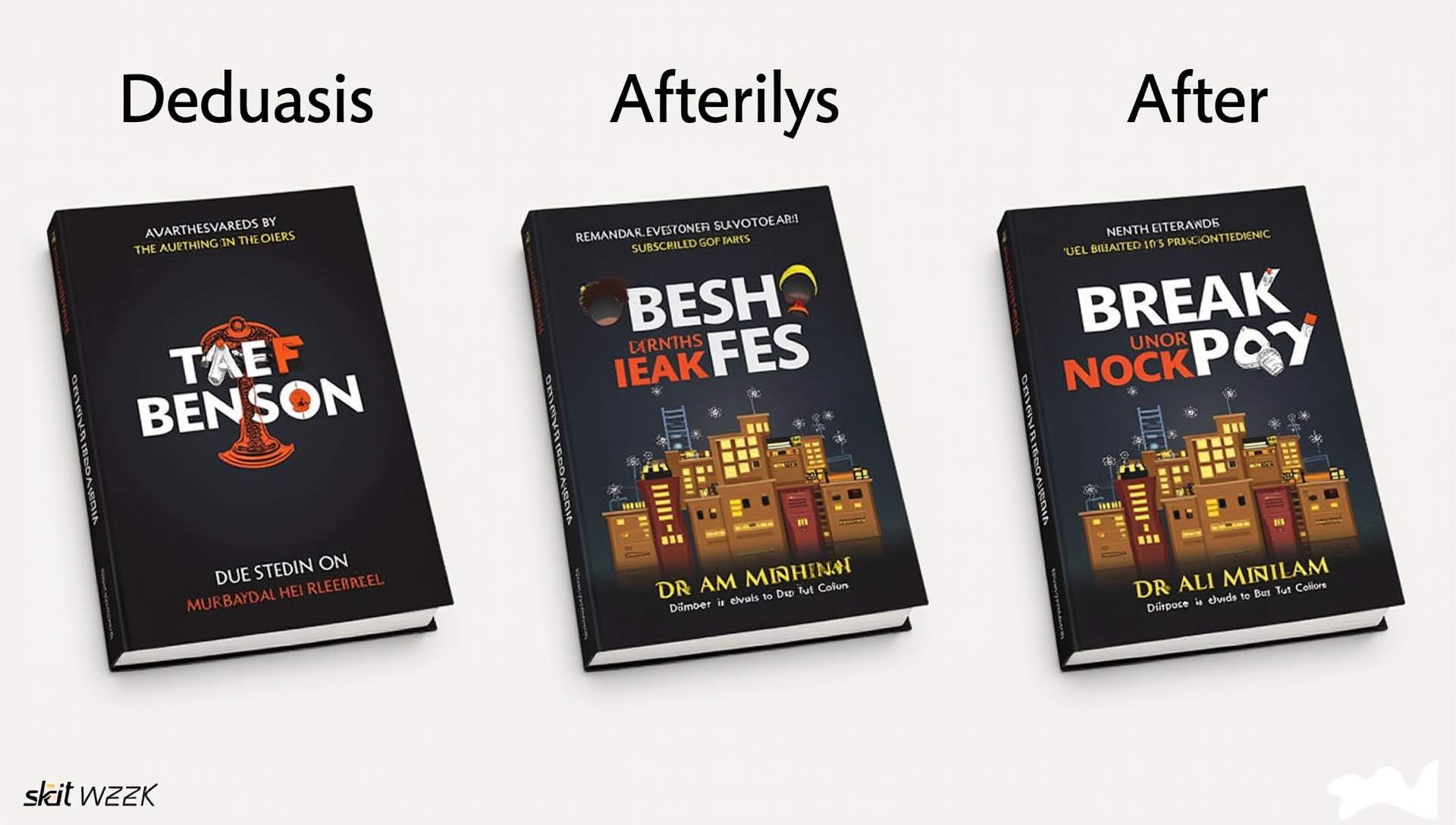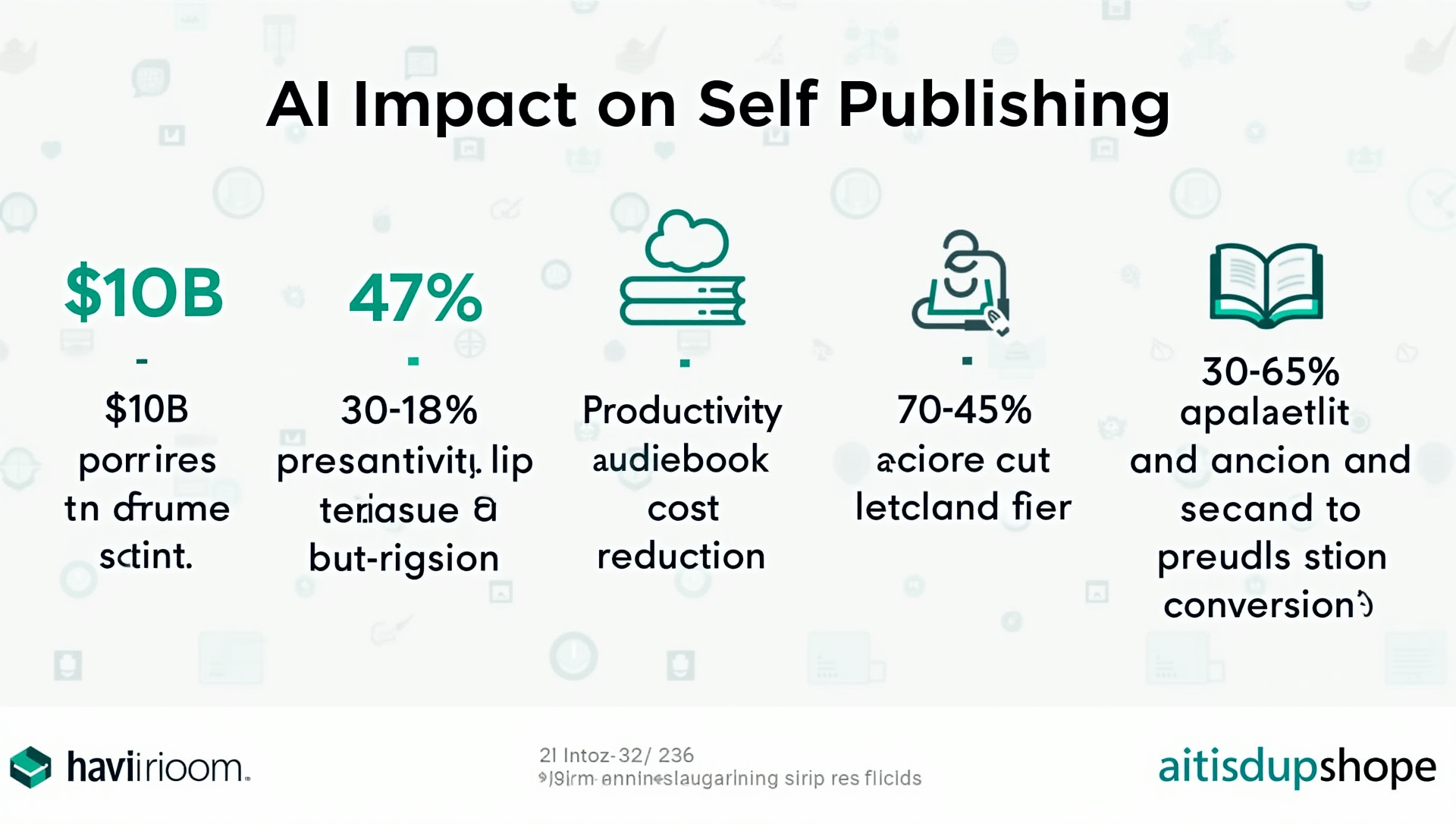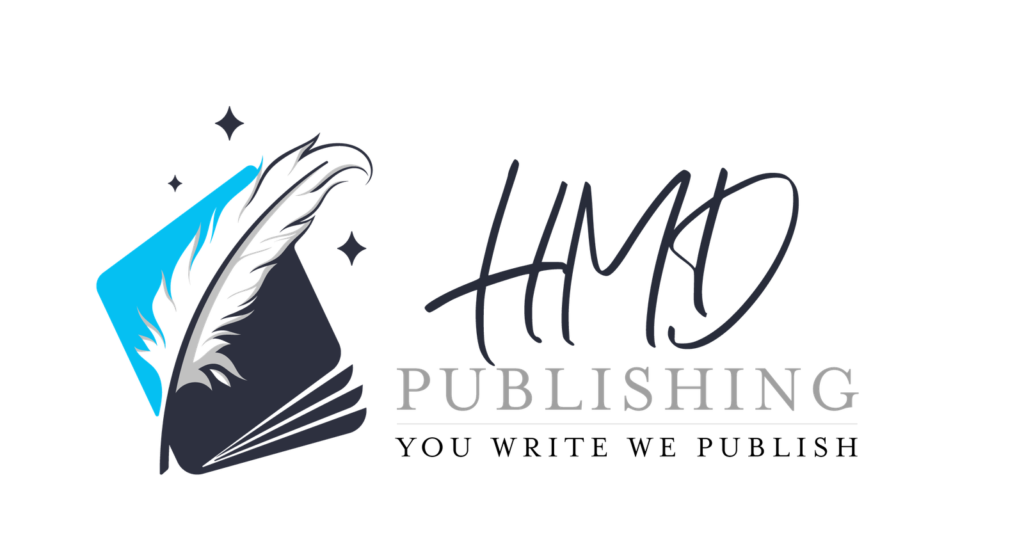The self-publishing landscape is being rapidly transformed by AI self-publishing tools and AI writing assistants, creating new opportunities and challenges for authors using book marketing artificial intelligence and emerging AI book creation trends. Today’s indie authors need strategic approaches to harness the future of publishing technology and develop effective indie author AI strategies to stay competitive in an increasingly tech-driven market.
The AI Revolution in Self-Publishing
The global self-publishing market has grown to over $10 billion, with AI adoption rates accelerating dramatically since 2022. Recent industry surveys show that 47% of indie authors now use at least one AI tool in their publishing workflow.
This shift represents a fundamental AI transformation across all aspects of book production. The main areas experiencing disruption include content creation, editing, design, marketing, and audiobook production.
For authors looking to stay competitive, understanding these new publishing technology options isn’t optional—it’s essential. The cost savings and efficiency gains can be substantial for those who adopt the right indie author tools for their specific needs.

AI Writing Assistants: Beyond Basic Grammar Checking
Today’s AI writing software goes far beyond simple spell-checking. Leading tools like ChatGPT, Sudowrite, Jasper, and NovelAI offer capabilities that range from generating outlines to creating character descriptions and even drafting entire scenes.
The cost difference is striking: AI writing assistance typically runs $10-50 per month, while human ghostwriters charge between $2,000-15,000 per book. Many authors report productivity increases of 30-60% when using AI for drafting and outlining work.
I’ve found that AI excels at helping overcome writer’s block and generating fresh ideas for manuscript development. However, the human creative element remains irreplaceable for adding emotional depth and authentic voice to your work.
The most effective approach combines AI assistance with human creativity—using productivity tools to handle routine writing tasks while focusing your energy on the elements that make your writing unique. This hybrid approach delivers the best results for most authors.
Revolutionizing Book Editing with AI
AI editing tools like ProWritingAid, AutoCrit, and Grammarly have changed how authors approach the revision process. These tools can identify not just basic errors but also stylistic issues, pacing problems, and readability concerns.
The numbers tell an impressive story: AI editors achieve 75-85% accuracy for grammar and spelling issues and 40-60% for stylistic improvements. The error detection capabilities continue to improve with each software update.
Cost comparison makes a compelling case for at least trying these tools. AI editing subscriptions cost $10-30 monthly compared to professional human editing at $500-3,000 per manuscript.
I still recommend human editors for final polishing, but using AI for early manuscript polishing can significantly reduce the workload and cost. The best approach combines AI’s consistency with a human editor’s nuanced understanding of language and storytelling.

AI-Generated Book Covers and Interior Design
The rise of AI art generators has disrupted the book cover design process. Tools like Midjourney, DALL-E, and Canva’s AI features can create professional-looking covers at a fraction of traditional costs.
Cost comparison makes a clear business case: AI-generated covers typically cost $20-50 compared to $300-1,500 for custom designs from professional designers. This price difference makes professional-quality covers accessible to authors with limited budgets.
However, copyright concerns remain a crucial consideration. I always recommend authors follow these best practices for using AI-generated images:
- Use platforms with clear commercial use rights
- Avoid generating images that mimic specific artists’ styles
- Create unique prompts rather than copying others
- Consider combining AI generation with custom elements
The same AI advances are changing interior formatting as well. Automated layout tools can now handle complex formatting tasks like poetry collections, illustrated books, and technical manuals with minimal human intervention.
Marketing Automation and Reader Targeting
AI marketing tools have transformed how indie authors promote their books. Book marketing platforms now incorporate machine learning to optimize ad spending, target the right readers, and analyze campaign performance.
The results speak for themselves: authors using AI ad optimization report 30-45% improved conversion rates. This means more sales with the same marketing budget, a critical advantage in an increasingly competitive market.
Reader acquisition has become more scientific with AI-driven analytics. These tools can identify patterns in reader behavior that human marketers might miss, creating opportunities for micro-targeting specific audience segments.
Email marketing has seen similar improvements through AI implementation. Personalization capabilities from AI-driven reader segmentation increase engagement rates by 25-40% compared to generic campaigns.
The most effective advertising optimization now combines human creativity with AI analytics. I write the emotional hooks that connect with readers, while AI helps ensure those messages reach the right audience at the right time.

The AI Audiobook Revolution
Audiobook creation has seen perhaps the most dramatic AI disruption in publishing. New voice synthesis technologies from companies like Google Play, Apple Books, DeepZen, and Speechki have made audiobook production accessible to nearly all authors.
The economics are compelling: AI narration reduces audiobook production costs by 70-90%, bringing prices down from $1,000-3,000 to just $100-300 for a full-length book. This dramatic reduction opens the audiobook market to authors who previously couldn’t afford professional narration.
Quality comparison between human and AI narrators shows a narrowing gap. While human narrators still excel at emotional nuance, recent blind listening tests show that many readers can’t reliably distinguish between human and AI narration quality for certain genres.
For non-fiction and straightforward fiction, AI narration offers a cost-effective solution that doesn’t compromise significantly on quality. For complex literary fiction or works requiring distinct character voices, human narrators still maintain a clear advantage.
Ethical Considerations and Creative Ownership
As AI tools become more integrated into the creative process, important questions about copyright law and creative authenticity arise. The legal landscape remains in flux, with new precedents being established regularly.
Recent legal cases have begun establishing boundaries around AI-assisted content. Most courts currently recognize that AI outputs derived from human prompts remain the intellectual property of the human creator, but this area continues to evolve.
Many publishers now have specific disclosure requirements regarding AI use in submissions. I recommend always being transparent about your use of AI tools, particularly when submitting to traditional publishers or entering contests.
The ethical questions extend beyond legal considerations to the core of authorship itself. Finding your personal comfort level with AI assistance is a necessary step for every modern author.
Distribution Intelligence: Using AI to Maximize Reach
AI algorithms now power the recommendation systems on every major book distribution platform. Understanding how these systems work gives authors a significant advantage in increasing visibility.
Metadata optimization has become a science, with AI tools that can analyze successful books in your genre and suggest keywords, categories, and description elements to improve discoverability. These small adjustments can lead to significant improvements in organic visibility.
Predictive analytics now allow authors to identify optimal timing for launches and promotions. By analyzing historical sales patterns and market trends, AI can suggest the best times to release new works or run price promotions.
The future of algorithmic visibility belongs to authors who can balance creative integrity with data-driven decision making. I’ve found that letting AI handle the analytical aspects of distribution frees up my creative energy for writing.
The Future of AI and Self-Publishing: 2024 and Beyond
Expert predictions suggest we’re just seeing the beginning of AI’s impact on publishing. The next generation of tools will likely offer even more personalized assistance tailored to individual author styles and workflows.
One concerning trend is potential market saturation as AI lowers barriers to entry. As more AI-assisted books flood the market, quality and authenticity will become even more important differentiators.
The emerging consensus points toward hybrid human-AI workflows as the industry best practice. These approaches leverage AI for efficiency while preserving the human creativity that readers ultimately value.
Publishing trends suggest that readers don’t mind AI assistance—they mind poor quality. The authors who succeed will be those who use AI to handle routine tasks while focusing their human creativity on the elements that truly connect with readers.
Industry forecasts indicate that future technology developments will continue to democratize publishing, allowing more diverse voices to reach readers. This represents both a challenge and an opportunity for authors willing to adapt.
Key Takeaways
AI tools offer significant advantages in cost, efficiency, and accessibility across the self-publishing workflow. From writing and editing to design, marketing, and distribution, AI can handle many technical aspects of publishing.
The most successful authors will combine AI assistance with human creativity rather than choosing one over the other. Finding your personal balance is key to maintaining your authentic voice while benefiting from technological advances.
Transparency about AI use remains important both ethically and practically. As the technology continues to evolve, staying informed about best practices will help you navigate this changing landscape confidently.



